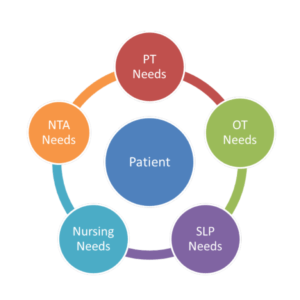CMS’ plans to reform payment to post-acute healthcare cause concern
A top official of the Centers for Medicare & Medicaid Services (CMS) told a House subcommittee June 14 that reforming payment policies for post-acute healthcare services (PAC) is crucial to controlling overall Medicare spending, a key objective of lawmakers as they seek to reduce the federal deficit.
However, much of what Jonathan Blum, acting principal deputy administrator and director, at the Center for Medicare at CMS, told the subcommittee during its hearing on PAC payment reform, was not exactly encouraging for the long-term care industry.
Blum cited a litany of industry “payment vulnerabilities” that he said contribute to a “high degree” of payment variations across the country for various services.
He said CMS’ program integrity efforts have identified improper billing schemes by post-acute care providers, including:
- Skilled nursing facilities (SNFs) billing for services not provided or not medically appropriate;
- SNFs billing for individual therapy when group therapy was provided;
- Inpatient rehabilitation facilities (IRFs) billing for services rendered without physician orders;
- Home health agencies (HHAs) billing for care for beneficiaries who are not homebound;
- HHAs purposefully delaying discharge of patients when skilled care is no longer needed.
“Some of these improper billing practices point to potential overtreatment of Medicare beneficiaries, with patients receiving more intensive care than is medically warranted,” Blum said. “They also point to the importance of both antifraud efforts as well as improvements in the way CMS pays for post-acute care to incentivize high-quality care delivered in the most appropriate care setting.”
Blum went on to outline CMS’ plans for regulatory reforms to reduce PAC spending, including proposals included in President Obama’s budget for FY2014 such as reducing Medicare market basket updates for SNFs, HHAs, long-term care hospitals (LTCHs), and inpatient rehabilitation facilities (IRFs).
As if his testimony wasn’t tough enough, Mark E. Miller, PhD, executive director of the Medicare Payment Advisory Commission (MedPAC), told lawmakers that when the feds alter payment policies, the industry quickly adjusts its patient services to take advantage. He gave these examples:
- The episode-based payment for HHAs created incentives to lower the number of visits per episode, and the average number declined 32 percent following implementation.
- The SNF and HHA prospective payment system (PPS) favors therapy services over treatments required by medically complex patients, resulting in increases in therapy furnished and a shift to treating patients who require therapy services and away from medically complex patients.
- The LTCH PPS pays much lower amounts for exceptionally short stays, so the average lengths of stay now cluster just above the day thresholds to maximize payment with the minimum amount of services.
“Clearly, Medicare must concurrently refine its fee for service (FFS) policies while exerting pressure on providers to control their costs and be receptive to new payment methods and delivery reforms,” said Miller. He added, “When providers tailor the amount of service they furnish to take advantage of the designs of the payment systems, Medicare spending can increase even though the care needs of patients did not similarly change.”
Dr. Miller noted that MedPAC recommended no update payments to IRFs and LTCHs for FY2014, concluding that those providers will be able to continue to provide appropriate access to care under current rates. For SNFs and HHAs, MedPAC reiterated its previous recommendations to lower payments and restructure the PPSs to base payments on patient characteristics, not the amount of services furnished.
“In making these recommendations, the Commission considered the double-digit Medicare margins both sectors have experienced for many years,” Miller said, estimating Medicare margins in 2013 to be 12 percent for HHAs and from 12 to 14 percent for SNFs. MedPAC also considered the existing incentives for these sectors “to furnish services for financial rather than clinical reasons and to select patients with certain care needs over others.
Mark Parkinson, president and CEO of the American Health Care Association (AHCA) (which has just merged with the Alliance for Quality Nursing Home Care), said AHCA was encouraged by the subcommittee’s “willingness to consider proposals that do more than simply cut payments to health care providers.” SNFs, he said, “are already reeling from deep cuts to Medicaid and Medicare, as reflected in our razor-thin operating margins.”
He noted that AHCA’s proposal to reduce hospital readmissions would mean a more efficient health care system and better quality for patients, and said the association appreciates the committee’s exploring payment reforms based more on the quality of patient care rather than the location of where it is provided.
Noting that MedPAC just released its June 2013 report to Congress, Parkinson said AHCA “welcomes a thoughtful dialogue on how outpatient therapy services covered under Medicare Part B can become more efficient, as long as decisions do not jeopardize seniors’ access to these services.” He added that MedPAC “continues to underestimate the value of Part B therapy services for our nation’s seniors.”
Parkinson said “current suggested policy changes are short-sighted and only threaten seniors’ ability to reach their highest potential.” He urged the commission to reconsider its recommendations to cap access to care that is medically necessary.
Parkinson noted that MedPAC suggested a bundled payment system and said AHCA is “eager to see” the results of an ongoing demonstration by CMS’ Center for Medicare and Medicaid Innovation, in which some AHCA SNF members are participating.
“Before implementing full-fledged reform into this still unknown proposal, AHCA encourages caution and careful examination of the CMMI demo, to ensure seniors will continue to receive the care they need,” he said.

Robert Gatty has more than 40 years of experience in journalism, politics and business communications and is the founder and president of G-Net Strategic Communications based in Myrtle Beach, South Carolina. He can be reached at bob@gattyedits.com.
Related Articles
Topics: Articles , Executive Leadership , Finance , Medicare/Medicaid , Regulatory Compliance










